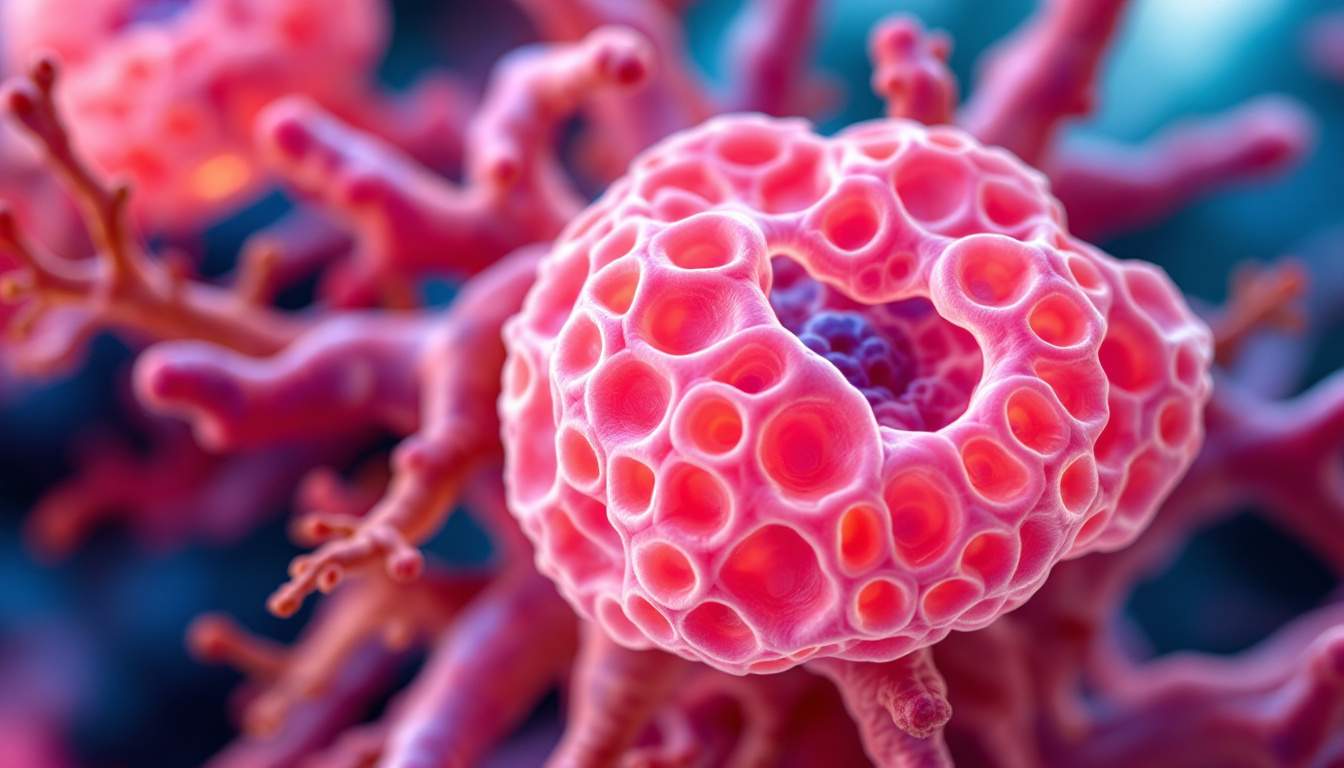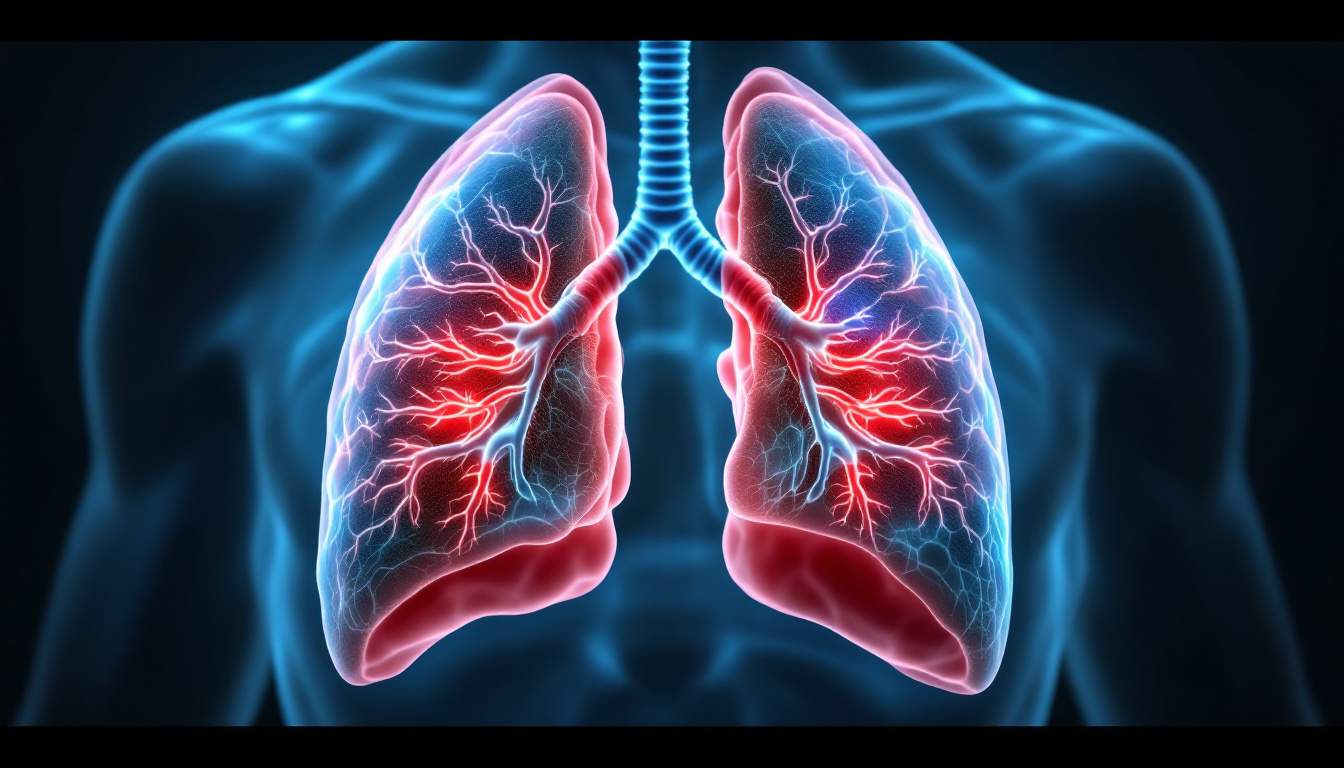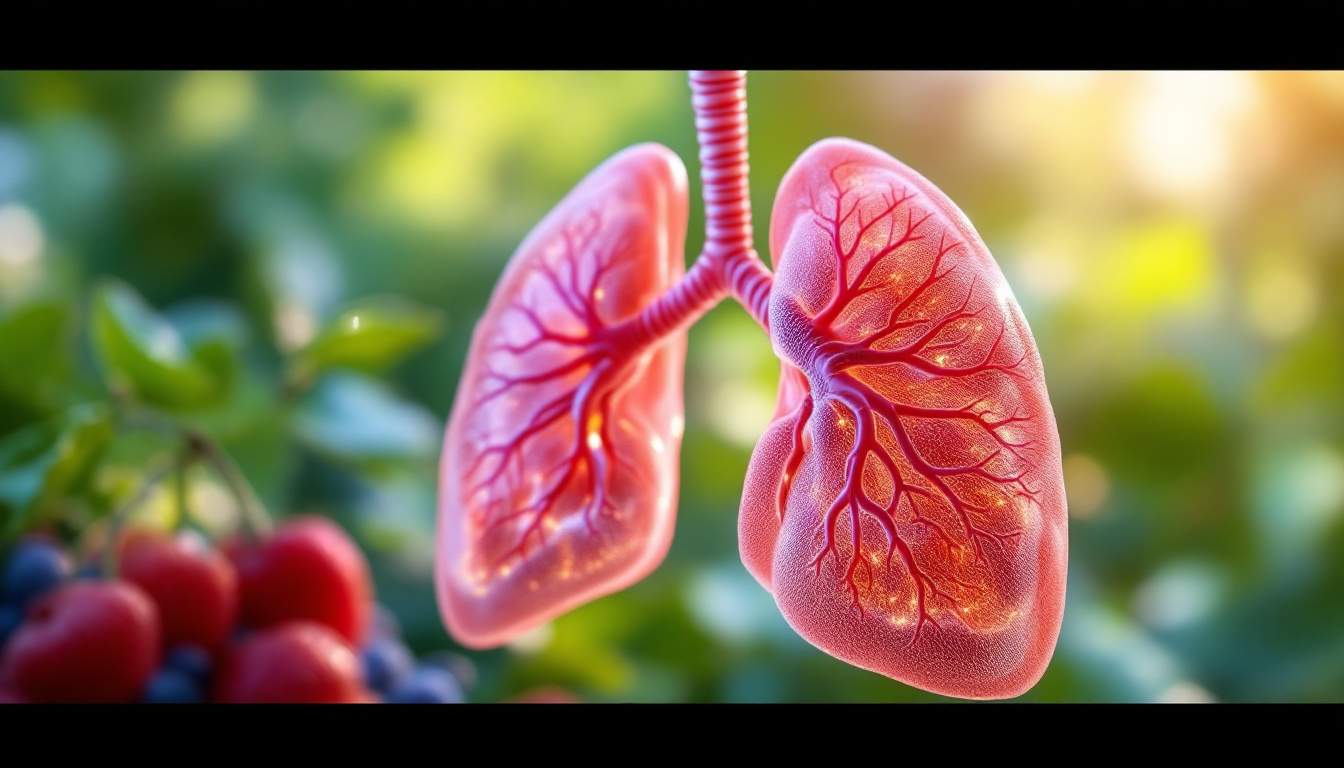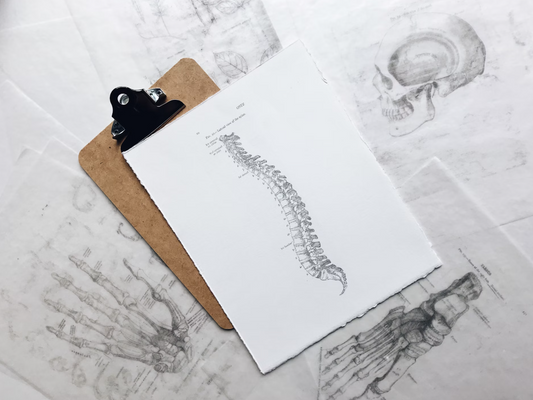Glossary: What is Alveoli
Understanding the respiratory system is essential for appreciating how our bodies function, especially the critical role that alveoli play in our overall health. In this article, we will explore various aspects of alveoli, from their definition to their structure, functions, and even the factors that affect their health. Let’s dive into the fascinating world of these tiny yet vital components of our lungs.
Understanding the Basics of Alveoli
Alveoli are microscopic air sacs located at the end of bronchioles in the lungs. Their primary function is to facilitate the exchange of gases between the air and the bloodstream. This process is crucial for oxygenating the blood and removing carbon dioxide, a waste product produced by the body's cells.

Definition of Alveoli
Alveoli are small, balloon-like structures within the respiratory system. Each human lung contains approximately 300 million of these tiny air sacs. Their immense surface area, combined with their intricate structure, makes them ideally suited for gas exchange. The word 'alveolus' comes from Latin, meaning 'small cavity,' which perfectly describes their shape and function.
The Role of Alveoli in the Respiratory System
Alveoli play a crucial role in the respiratory system. When we breathe in, air travels through the trachea, bronchi, and bronchioles until it reaches the alveoli. Here, oxygen from the air passes into the bloodstream, while carbon dioxide moves from the blood to the alveoli to be exhaled. This vital function occurs due to the thin walls of the alveoli, which allow for efficient gas exchange.
Without properly functioning alveoli, our bodies would struggle to receive the oxygen they need, leading to various health issues. Therefore, maintaining healthy alveoli is essential for overall well-being. Factors such as smoking, pollution, and respiratory infections can significantly impact the health of alveoli, leading to conditions like emphysema and chronic obstructive pulmonary disease (COPD). These diseases can severely impair lung function, making it difficult for individuals to breathe and engage in everyday activities.
Moreover, the alveoli are not just passive structures; they also play a role in the immune response. They are lined with specialized cells that help trap and eliminate pathogens and particulates from the air we breathe. This defense mechanism is crucial in protecting the lungs from infections and ensuring that the gas exchange process remains efficient. The health of the alveoli is thus intertwined with overall respiratory health, highlighting the importance of both environmental factors and lifestyle choices in maintaining lung function.
The Structure of Alveoli
The structure of alveoli is uniquely designed to maximize their function in gas exchange. Understanding this structure is key to appreciating how alveoli facilitate breathing and oxygen transport.
The Unique Design of Alveoli
The alveoli are lined with a thin layer of epithelial cells, known as the alveolar epithelium. This structure allows for optimal gas exchange, as gases can easily diffuse through the cell membranes. The walls of the alveoli are also coated with a substance known as surfactant, which reduces surface tension and prevents the alveoli from collapsing. This surfactant is produced by specialized cells called type II alveolar cells.
The design of the alveoli—not only are they tiny, but they also come in clusters resembling grapes—creates a vast surface area for gas exchange, which is about the size of a tennis court when all the alveoli are spread out. This incredible surface area is vital for meeting the body's oxygen demands. Furthermore, the alveoli are strategically located at the end of the bronchioles, ensuring that the air reaching them is warm, moistened, and filtered, which enhances the efficiency of gas exchange. The close proximity of the alveoli to the capillary networks surrounding them allows for a rapid exchange of oxygen and carbon dioxide, making the respiratory process both effective and efficient.
The Cell Types in Alveoli
Alveoli consist of several different cell types, each performing specialized functions that contribute to overall lung health. The primary cell types found in alveoli include:
- Type I Alveolar Cells: These cells make up around 95% of the alveolar surface and are responsible for the majority of gas exchange due to their extensive surface area.
- Type II Alveolar Cells: These cells produce surfactant and help repair the alveolar lining.
- Alveolar Macrophages: These immune cells patrol the alveoli, engulfing pathogens and debris to keep the lung environment clean.
Each type of cell plays a crucial role in maintaining healthy alveoli and, by extension, healthy lungs. In addition to these primary cell types, the alveolar environment is rich with extracellular matrix components that provide structural support and facilitate communication between cells. This matrix is essential for maintaining the integrity of the alveolar walls and plays a role in the repair processes following injury or inflammation. The intricate balance of these cells and their functions is vital for ensuring that the alveoli can respond effectively to various physiological demands, such as during exercise when the body requires increased oxygen intake and carbon dioxide removal.
The Function of Alveoli
The primary function of alveoli is to facilitate gas exchange, but they also have several other important roles in the respiratory system that contribute to our health.
Gas Exchange Process in Alveoli
The gas exchange process in alveoli occurs through a mechanism known as diffusion. When air enters the lungs, the oxygen concentration in the alveoli becomes higher than that of the surrounding pulmonary capillaries. This difference in concentration allows oxygen to diffuse into the blood. Simultaneously, carbon dioxide, which has a higher concentration in the blood, diffuses out of the capillaries into the alveoli to be exhaled.
Efficient gas exchange is critical; even a small decrease in surface area or volume of the alveoli can lead to significant health issues, such as difficulty breathing or reduced oxygen levels in the body. The alveoli are lined with a thin layer of epithelial cells, which minimizes the distance that gases must travel, ensuring rapid exchange. Additionally, the presence of surfactant—a substance produced by type II alveolar cells—reduces surface tension, preventing the alveoli from collapsing and further enhancing their ability to function effectively during breathing.
Alveoli's Role in Oxygen Transportation
Once oxygen is exchanged in the alveoli, it binds to hemoglobin molecules in red blood cells. This process is vital for transporting oxygen to cells throughout the body, where it is used for cellular respiration—the process by which cells generate energy. The effectiveness of oxygen transportation depends significantly on the healthy function of alveoli; any impairment can affect the entire body's ability to function optimally. Furthermore, the efficiency of this transport system is influenced by factors such as altitude, physical fitness, and even the presence of pollutants in the air, which can all impact how well oxygen is absorbed and utilized by the body.
Interestingly, the alveoli also play a role in the immune response. They are equipped with immune cells, such as macrophages, which help to trap and eliminate pathogens and foreign particles that may enter the lungs. This protective mechanism is crucial, as it helps to maintain lung health and prevent infections. Moreover, the alveolar walls are rich in capillaries, which not only facilitate gas exchange but also allow for the transport of immune cells throughout the body, highlighting the multifaceted role that these tiny structures play in our overall health and well-being.
Conditions Affecting the Alveoli
Unfortunately, various conditions can negatively impact the health and function of alveoli. Understanding these conditions is crucial for preventing and managing respiratory issues.

Common Diseases and Disorders of the Alveoli
Several diseases primarily affect the alveoli, including:
- Chronic Obstructive Pulmonary Disease (COPD): This group of lung diseases, including emphysema and chronic bronchitis, causes airflow obstruction and breathing difficulties.
- Pneumonia: An infection that inflames the alveoli, causing them to fill with fluid or pus, leading to serious respiratory issues.
- Pulmonary Fibrosis: A condition characterized by the thickening and scarring of alveolar tissue, significantly affecting gas exchange.
These conditions can drastically impair lung function, highlighting the importance of acknowledging and addressing respiratory health concerns. For instance, COPD not only limits airflow but can also lead to exacerbations that require hospitalization. Patients may experience chronic cough, wheezing, and increased production of mucus, which can further complicate their overall health. Early diagnosis and management are essential to slow the progression of these diseases and improve quality of life.
Impact of Smoking and Pollution on Alveoli
Smoking is one of the leading causes of alveolar damage, contributing to diseases like emphysema and chronic bronchitis. The harmful chemicals in tobacco smoke can inflame and destroy alveoli, leading to a reduced surface area for gas exchange.
Additionally, environmental pollutants, such as those found in urban areas or industrial emissions, can also have detrimental effects on alveolar health. Long-term exposure to these pollutants can lead to chronic lung conditions, further emphasizing the need for clean air and healthy living environments. Research has shown that even short-term exposure to high levels of air pollution can trigger acute respiratory symptoms and exacerbate existing lung diseases. This underscores the importance of public health initiatives aimed at reducing pollution and promoting smoking cessation programs, as both strategies can significantly improve respiratory health outcomes for communities.
Maintaining Alveoli Health
Given their critical role in respiratory health, it’s vital to take proactive measures to maintain the well-being of our alveoli. This can significantly contribute to overall health and quality of life.

Importance of Healthy Alveoli
Healthy alveoli are essential for effective breathing and proper oxygenation of the blood. When the alveoli function optimally, they support not only lung health but also general health, energy levels, and the body's ability to fend off illnesses. Poor alveolar health can lead to chronic fatigue, decreased immunity, and various respiratory conditions, all of which can severely affect daily life and activities. Furthermore, the alveoli are crucial for the exchange of gases; they allow oxygen to enter the bloodstream while facilitating the removal of carbon dioxide, a waste product of metabolism. This delicate balance is vital for maintaining homeostasis within the body.
Tips for Keeping Your Alveoli Healthy
Here are some tips to help maintain your alveoli health:
- Avoid Smoking: The most significant step you can take is to avoid smoking and exposure to secondhand smoke.
- Stay Active: Regular physical activity strengthens your respiratory muscles and improves lung function.
- Eat a Balanced Diet: Foods rich in antioxidants, like fruits and vegetables, can help combat oxidative stress in the lungs.
- Practice Good Hygiene: Washing hands and avoiding close contact with those who are sick can help prevent respiratory infections.
- Get Regular Check-Ups: Regular visits to a healthcare provider can help catch any early signs of respiratory issues.
By taking these simple yet effective steps, you can support the health of your alveoli and enhance your overall respiratory function. In addition to these tips, incorporating breathing exercises into your daily routine can also be beneficial. Techniques such as diaphragmatic breathing and pursed-lip breathing can improve lung capacity and efficiency, allowing for better oxygen exchange in the alveoli. Moreover, staying hydrated is crucial; proper hydration helps thin mucus in the airways, making it easier for the lungs to function effectively.
In conclusion, alveoli are more than just tiny air sacs; they are vital components of our respiratory system that play an invaluable role in our overall health. Understanding their structure, function, and the factors that influence their health is essential for anyone looking to improve their respiratory well-being. By taking proactive measures to keep our alveoli healthy, we can enjoy better respiratory health for years to come.
As you've learned about the crucial role alveoli play in your respiratory health, take the next step in understanding and optimizing your breathing with Alveo. Our innovative Continuous Respiratory Wearable is designed for everyday use, providing real-time monitoring and personalized insights into your breath patterns and environmental influences. Experience the lightness and comfort of Alveo while benefiting from personalized breathing routines tailored to your lung capacity. Don't miss out on enhancing your respiratory well-being. Sign up on our waiting list today and be among the first to take control of your respiratory health with Alveo.




